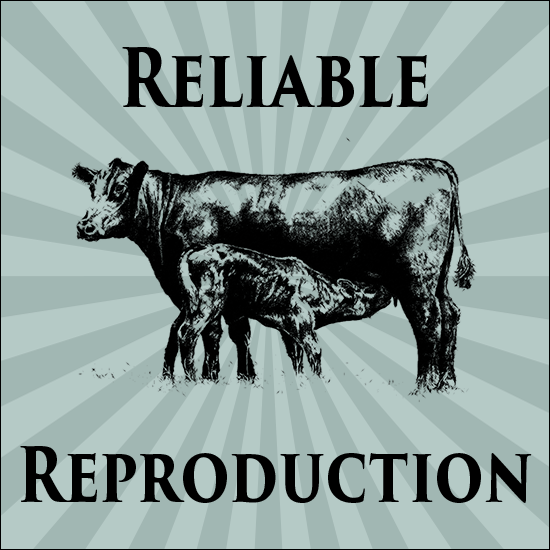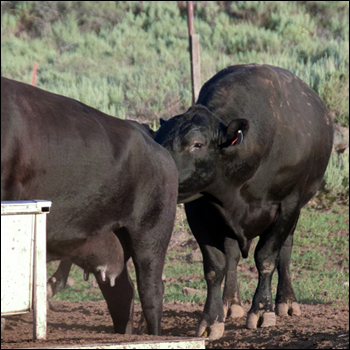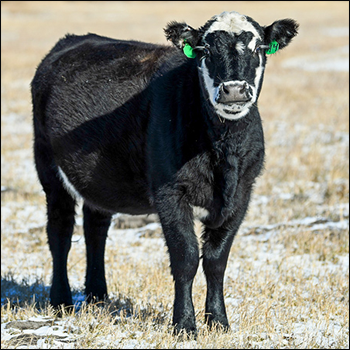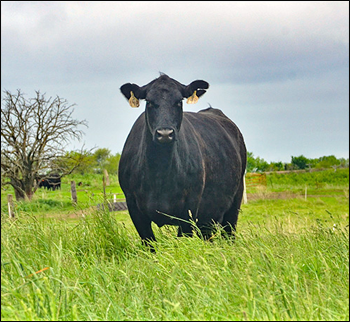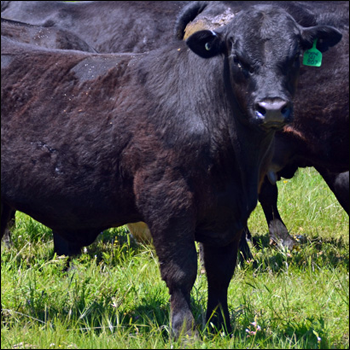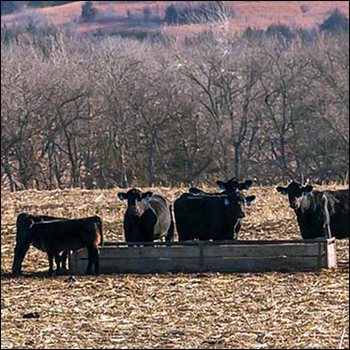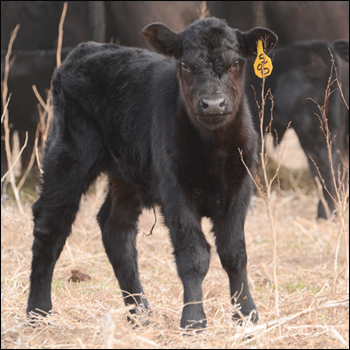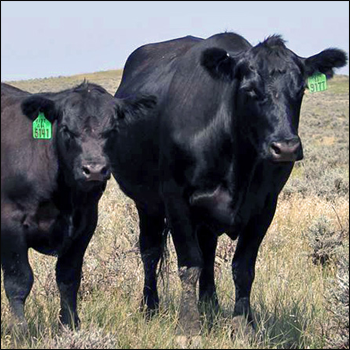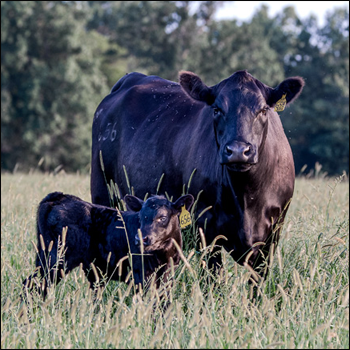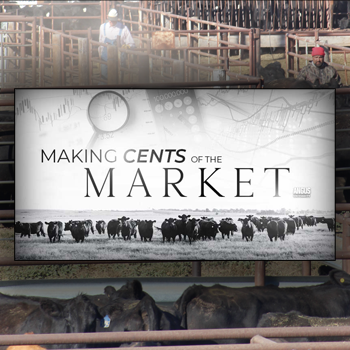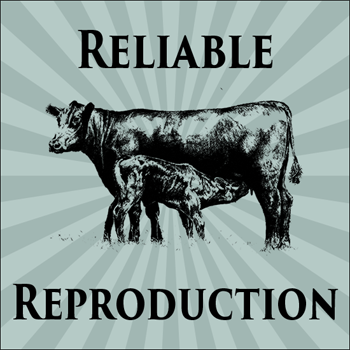News & Notes
Industry tidbits from around the country.
USDA expands Cooperative Interstate Shipment Program for meat processors in Montana
The USDA Food Safety and Inspection Service (FSIS) and the State of Montana have finalized a Cooperative Interstate Shipment (CIS) agreement, which provides an opportunity for selected state-inspected meat and poultry processors to ship their products across state lines. Under the CIS agreement, the State of Montana may inspect meat products produced in selected establishments for shipment throughout the United States.
The CIS program was launched in 2012 under Ag Secretary Tom Vilsack after being authorized in the 2008 Farm Bill. With the addition of Montana, 10 states now participate in the program to promote the expansion of business opportunities for state-inspected meat and poultry establishments. Under CIS, selected state-inspected establishments that comply with federal inspection requirements are permitted to ship their product in interstate commerce.
In addition to Montana, FSIS has signed agreements with Indiana, Iowa, Maine, Missouri, North Dakota, Ohio, South Dakota, Vermont and Wisconsin. For more information about CIS, visit www.fsis.usda.gov/cis.
Supreme Court to hear NPPC case Against Prop. 12
The U.S. Supreme Court at its March 25 conference agreed to hear a case brought by the National Pork Producers Council and the American Farm Bureau Federation (AFBF) against California’s Proposition 12, which bans the sale of pork from hogs born to sows that weren’t raised according to the state’s “arbitrary” production standards.
“We are extremely pleased that the Supreme Court will consider the constitutionality of Proposition 12, in which California seeks to impose regulations targeting farming practices outside its borders that would stifle interstate and international commerce,” said NPPC President Terry Wolters. “NPPC has poured a lot of blood, sweat and tears into preserving the rights of America’s pork producers to raise hogs in a way that’s best for their animals’ well-being and that allows them to continue selling pork to all consumers, both here and internationally.”
NPPC has waged a legal battle against the ballot initiative since it was approved in November 2018, arguing at the U.S. district and appellate court levels that Prop. 12 violates the Constitution’s Commerce Clause, which grants Congress the power to regulate trade among the states and limits the ability of states to regulate commerce outside their borders.
The high court is taking up the case on appeal from the U.S. Court of Appeals for the 9th Circuit, which in July upheld a lower court ruling against the NPPC-AFBF lawsuit.
NPPC and AFBF in the coming weeks will file their initial brief with the Supreme Court, which could hear oral arguments in the fall and could render a decision by the end of the year.
President submits FY2023 budget to Congress
The Biden-Harris administration on March 28 submitted to Congress the president’s budget for fiscal year 2023.
“It contains transformational investments that will help rural communities build resilience to the climate crisis; increase landscape resiliency to the impacts of climate change; create more and better markets for our hardworking producers; bolster access to healthy and affordable nutrition for families; help connect all Americans to high-speed, affordable, and reliable internet; strengthen USDA’s efforts to build equitable systems and programming; and position the United States to be a leader in agricultural research,” said Ag Secretary Tom Vilsack in response. “It will also help many of USDA’s agencies rebuild capacity after years of staff losses, strengthening the Department so we can better perform our duties and serve the American people.”
At USDA, the budget would:
- Invest in climate resilience and U.S. agriculture’s ability to be part of the climate solution. The budget proposes $1.177 billion in funding to address climate change across private, working ag land. The budget proposes $1 billion to support ag producers and landowners to undertake conservation and climate-smart practices on ag lands. The budget builds on the $618 million investment to protect and restore watersheds made in the Bipartisan Infrastructure Law by proposing an additional $135 million for these efforts.
The budget builds on the $5.5 billion investment in the U.S. Forest Service (USFS) made by the Bipartisan Infrastructure Law to reduce the risk of wildland fire, restore ecosystems and protect communities. It proposes increases of $285 million for forest restoration activities on National Forest Service lands and $5 million for forest inventory and analysis. The budget includes $390 million in additional funding to ensure ongoing support for President Biden’s direction that no firefighter is paid less than $15 per hour, hire additional firefighters, increase their pay, and convert more firefighters from temporary to permanent.
- Prioritize consistent access to safe, nutritious food for all Americans. The budget proposes $111 billion for the Supplemental Nutrition Assistance Program (SNAP), a budget level that supports 43.5 million Americans per month. It maintains funding for the Special Supplemental Nutrition Program for Women, Infants and Children (WIC) at $6 billion. In 2023, an average of 6.4 million low-income women, infants and children are expected to participate in the program each month. The budget proposes to continue the provision of enhanced Cash Value Benefits (CVBs) through 2023 to ensure all participating women and children have access to the scientific-based recommended level of fruits and vegetables.
- Build stronger rural economies. The president’s budget invests $935 million in rural America. It builds on the $65 billion investment made by the Bipartisan Infrastructure Law to make high-speed internet available to all Americans, bring down high-speed internet prices across the board, and provide technical assistance to rural communities seeking to expand broadband through an additional $113 million during the 2022-enacted level for the Rural Development Broadband ReConnect Program to provide access to quality broadband to rural residents and address challenges for tribal communities.
The budget provides $300 million to bring affordable electric power to rural residents, tribal communities, community facilities, schools and medical institutions that perform critical services each day. It provides $1.9 billion and includes a requirement that funding for construction, preservation or rehabilitation will be targeted to projects that improve energy or water efficiency, implement green features, and addresses climate resilience. - Develop more and better markets for U.S. ag products. The budget builds upon the administration’s efforts to create a fairer, more competitive, and more resilient meat and poultry supply chain by providing more than $10 million for oversight and enforcement of the Packers and Stockyards Act. It provides support to the Food Safety and Inspection Service (FSIS) to help small and very small processing facilities by reducing user fees. The budget provides money to support innovation in agriculture and livestock industries.
- Ensure underserved groups can more fully access and participate in USDA programs and services. The budget supports ongoing efforts to help ag producers and landowners resolve heirs’ land ownership and succession issues by proposing a program level of more than $60 million. In this budget, the National Institute of Food and Agriculture proposes more than $315 million for Minority-Serving Institutions (MSI), an increase of more than $53 million above the 2021-enacted level. The budget proposes $39 million for the Rural Partners Network — a renewed and expanded initiative to leverage USDA’s extensive network of county-based offices to help people in high poverty counties, including energy communities.
For more information on the president’s FY 2023 budget, visit www.whitehouse.gov/omb/budget.
Congress blocks industry input on cattle contract library pilot program
The North American Meat Institute (Meat Institute) said the fiscal year 2022 Omnibus Appropriations Bill creates a Cattle Contract Library pilot program requiring beef packers to report private business information to the government that will then be published, but blocks public comment on the Biden administration’s proposed rules for the program.
“Congress and the administration say they value transparency in the beef and cattle market, yet they bury this rider without debate in a giant spending bill and direct USDA to create the pilot program without any feedback from beef companies or cattle producers,” said Meat Institute President and CEO Julie Anna Potts. “There will be no opportunity for companies to provide valuable perspective on what information should be included or how it should be reported.”
Under the pilot, Meat Institute members who purchase beef cattle with an Alternative Marketing Arrangement (AMA) will be legally obligated to report proprietary and sensitive data to the government for publication.
The law is vague and provides no guardrails for the type or amount of data and leaves program development up to the USDA Agriculture Marketing Service (AMS).
Finally, the law contains a provision that allows AMS to promulgate the rules without a comment period as normally required by law.
“The Congress directs the administration to create another onerous USDA program with the sole purpose of collecting private business information and making it public without any input from the regulated industry,” said Potts. “This is not transparent or responsible.”

Patricia Smith has been appointed interim head of the Department of Biological and Agricultural Engineering. [Photo courtesy Texas A&M Agrilife] |
Interim department head leadership appointed
Interim leadership has been appointed for two key departments in the College of Agriculture and Life Sciences at Texas A&M University in College Station:
- Patricia Smith has been appointed interim head of the Department of Biological and Agricultural Engineering.
- Andy Herring has been appointed interim head of the Department of Animal Science.
 Andy Herring has been appointed interim head of the Department of Animal Science. [Photo courtesy Texas A&M Agrilife] |
Smith currently serves as associate department head and directs the undergraduate program. Her research focuses on hydrologic modeling, land use and cover effects on hydrologic processes. These lead to the development of total maximum daily loads for bacterial impairment of streams.
Herring is the John K. Riggs ’41 Beef Cattle Professor and member of the Texas A&M intercollegiate faculty of genetics. Herring handles both teaching and research, with research interests focusing on increasing production efficiencies for cow-calf producers through breeding systems, environmental resources and marketing strategies.
John Tracy, director of the Texas Water Resources Institute, was serving as interim department head for the Department of Biological and Agricultural Engineering. Cliff Lamb previously served as head of the Department of Animal Science until his appointment as director of Texas A&M AgriLife Research in February by the Texas A&M University System Board of Regents.
NIAA launches sustainability council
The National Institute for Animal Agriculture (NIAA) has launched a new sustainability council to empower NIAA members, partners and industry experts to explore, discuss, learn and develop knowledge that ensures the viability and acceptance of animal agriculture in today’s food system. The council will host the inaugural webinar April 14.
“The question is no longer why the sustainability agenda holds strategic relevance or what action must be taken in order to achieve it, but rather how to do so,” said Fabian Bernal, global head of sustainability for DeLaval Group.
Bernal and Angela Baysinger, North American animal welfare lead for the veterinary and consumer affairs team of Merck Animal Health, will co-chair the council. The new council replaces the Animal Care Council and the Food Security, Regulatory & Trade Council. It will work to address topics such as environmental stewardship, animal welfare, food security and more.
Animal agriculture leaders within today’s food system have always considered sustainability vitally important to the success of the industry. However, conversations on the topic have greatly expanded and escalated outside of the animal agriculture sector within recent years. Like many topics, food system sustainability has evolved from a conversation of theory and policy to one of practice and application. Additionally, consumer and corporate definitions of sustainability have expanded to now include environmental stewardship, social responsibility and economic viability. Animal agriculture topics of interest related to social responsibility include animal welfare, food security, labor and human rights, and more.
Agriculture professionals interested in the new Sustainability Council may join the inaugural Sustainability Council webinar by visiting https://bit.ly/0422-News2. The April 14 webinar will feature a conversation between co-chairs and Tara Vander Dussen, the New Mexico Milk Maid; Jack Britt, food futurist, scientist and ag systems consultant; and Lara Moody, executive director of IFEEDER. The sustainability conversation will continue the following week at NIAA’s Annual Conference.
To register for the webinar or annual conference, visit the NIAA website event page or contact Morgan Young, NIAA director of communications and outreach, at morgan.young@animalagriculture.org.
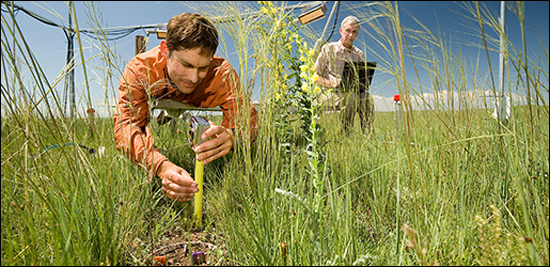
At the High Plains Grasslands Research Station in Cheyenne, Wyo., ecologist Dana Blumenthal (at left, lying on a board) and plant physiologist Jack Morgan measure plant heights and download soil water content data to determine water’s role in mediating plant responses to warming and elevated carbon dioxide.[Photo by Stephen Ausmus, courtesy USDA] |
USDA ARS and WSSA present weed science webinar series
The USDA’s Agricultural Research Service (ARS) and Weed Science Society of America (WSSA) March 28 announced the launch of a free webinar series focusing on current research and advancements in managing weeds and invasive plants. By collaborating, the scientists aim to highlight the important research that has contributed to the development of sustainable practices to control weeds and invasive plants.
- April 5 — ARS Weed Science: Past, Present and Future
- April 12 — Integrated Weed Management in Cropping Systems
- April 19 — Non-Crop Systems: Advancements in Weed Biocontrol Tools
- April 26 — New Technology for Weed Identification and Control
- May 3 — Role of Plant Physiology in Weed-Crop Competition
- May 10 — Molecular Basis for Controlling Invasive Plants
- May 17 — Addressing Herbicide Resistance with Alternative Chemistries
- May 24 — Spread and Distribution of Invasive Plants
- May 31 — Climate Change Effects on Weeds and Management
- June 7 — Restoration for Managing Invasive Plants
This webinar is open to the public. Register (https://bit.ly/0422-News1) in advance to attend.
New Voice of the Farmer Garden state program to bring agricultural learning nationwide
Farm Journal Foundation and the National Association of State Departments of Agriculture (NASDA) Foundation are launching a new partnership program for states to bring outdoor educational experiences about agriculture to visitors nationwide.
The Voice of the Farmer Garden state program will enable students and visitors to learn about the value U.S. farmers contribute to the economy, sustainability and global food security while engaging with educational content in participating states. The program will offer comprehensive learning materials for outdoor gardens at several local venues, including state departments of agriculture, state fairgrounds and educational facilities.
“Today, farmers make up less than 2% of the U.S. population, so students and consumers are further removed from where their food comes from than generations in the past,” Farm Journal Foundation CEO Tricia Beal said. “Our goal with the Voice of the Farmer Garden is to showcase the diversity of crops grown in the U.S. and explain the value that farmers create for our economy, our environment and our overall food system.”
Voice of the Farmer Garden exhibits feature a range of different crops that visitors can view throughout the growing season. Educational content available for visitors includes an interactive mobile phone-based walking tour, videos narrated by farmers, and informative signs, as well as virtual reality videos and classroom-based learning materials.
Throughout the experience, visitors can learn about how farmers produce our nation’s food, the different steps in the agricultural supply chain, how conservation agriculture contributes to environmental sustainability, and much more.
USDA publishes Origin of Livestock final rule for organic dairy
The USDA on March 29 published the Origin of Livestock (OOL) final rule for organic dairy.
“The Origin of Livestock final rule provides clear and uniform standards about how and when livestock may be transitioned to organic dairy production, and how transitioned animals are managed within the organic dairy system,” said Vilsack.
USDA’s National Organic Program (NOP) will oversee the new rule, which in general:
- Allows a dairy livestock operation transitioning to organic, or starting a new organic farm, to transition non-organic animals one time.
- Prohibits organic dairies from sourcing any transitioned animals. Once a dairy is certified organic, animals must be managed as organic from the last third of gestation. Variances may be requested by small businesses for specific scenarios.
“Consumers of dairy that carry the USDA Certified Organic Seal can trust that those products meet their expectations for how organic dairy products are produced,” said Jenny Lester Moffitt, undersecretary for marketing and regulatory programs.
More information about the rule is available at www.ams.usda.gov/rules-regulations/national-organic-program-origin-livestock.

Angus Proud
In this Angus Proud series, Editorial Intern Jessica Wesson provides insights into how producers across the country use Angus genetics in their respective environments.
 Angus Proud: Scott Sproul
Angus Proud: Scott Sproul
Oklahoma operation learned wisdom of moving calving season to better suit their marketing needs.
 Angus Proud: Bubba Crosby
Angus Proud: Bubba Crosby
Fall-calving Georgia herd uses quality and co-ops to market calves.
 Angus Proud: Jim Moore
Angus Proud: Jim Moore
Arkansas operation retains ownership through feeding and values carcass data.
 Angus Proud: Les Shaw
Angus Proud: Les Shaw
South Dakota operation manages winter with preparation and bull selection.
 Angus Proud: Jeremy Stevens
Angus Proud: Jeremy Stevens
Nebraska operation is self-sufficient for feedstuffs despite sandy soil.
 Angus Proud: Dave Rutan
Angus Proud: Dave Rutan
Angus breeder gets the most out of his bull investment by partnering with opposite calving-season operation.
